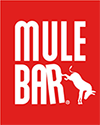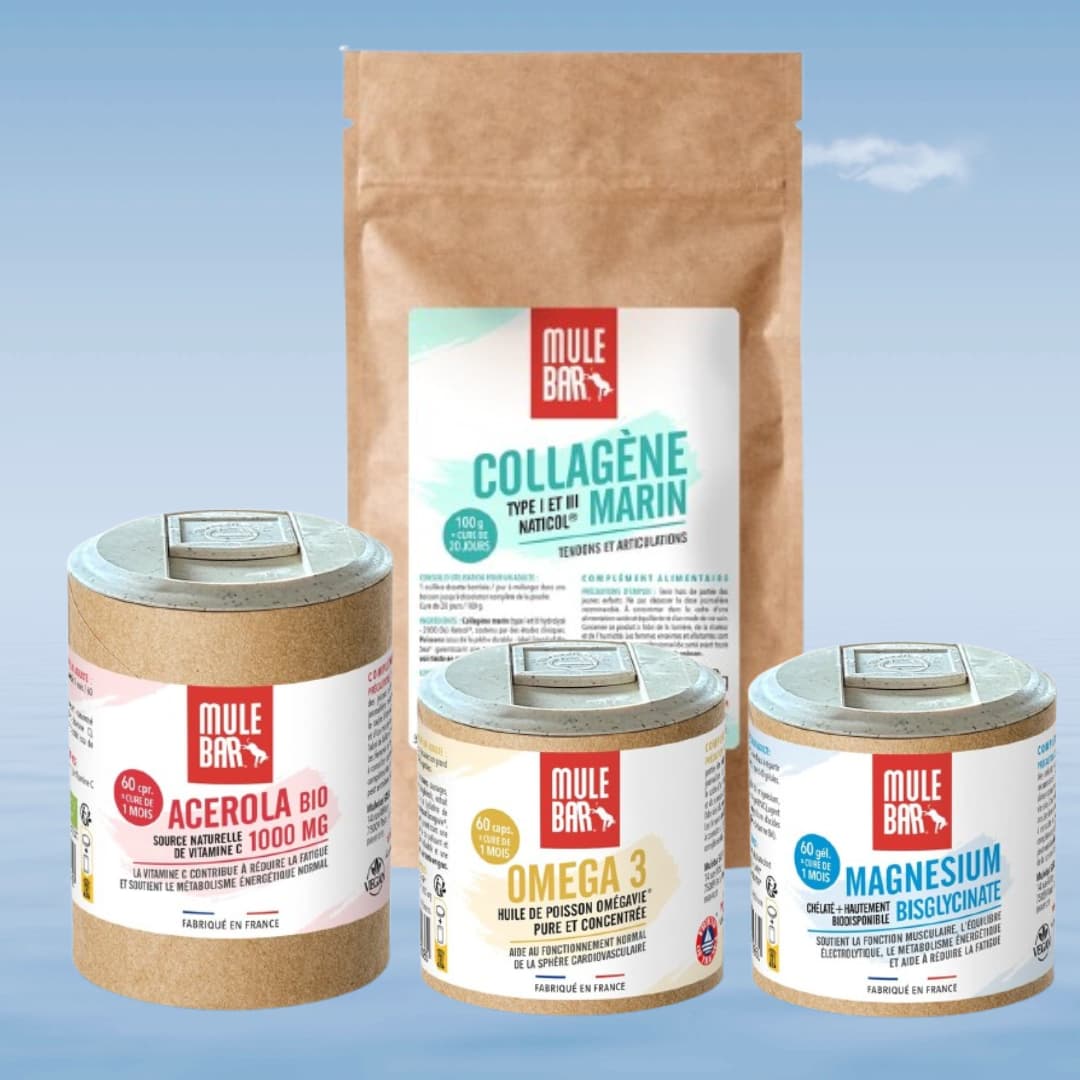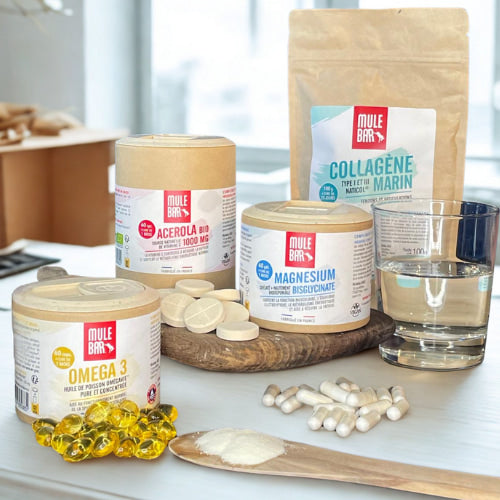That annoying pulling on the outside of your knee while jogging might just be the infamous Iliotibial band syndrome. Overcoming it will require a clever mix of relative rest, tailored strengthening exercises, and specific fascia lata rehabilitation. Our approach combines inflammation relief, improved biomechanics, and practical advice to restore your IT band and rediscover the joy of running fast.
Iliotibial band syndrome: understanding the treatment
This problem occurs when your iliotibial band repeatedly rubs against the femur bone (the lateral condyle) during knee movements. The result: a painful inflammation also known as fascia lata tendonitis. This condition particularly affects runners and cyclists who have increased their training too quickly or neglected muscle training and flexibility in their stabilizing muscles.
Ice, relative rest and guided recovery
The first step in treatment: reduce your mileage by 30 to 50 percent for one to two weeks. This relative rest helps calm inflammation without losing your progress. You can continue weight-bearing sports like cycling or swimming, as long as they don't cause pain.
Regularly apply an ice pack to the sore area for 10-15 minutes after exercise. This simple method quickly reduces pain and limits the need for anti-inflammatory medications that could slow your long-term recovery.
Causes and risk factors
The main causes? Progressing too quickly in training, particularly downhill or on hilly terrain, which puts stress on the iliotibial band. Weak gluteal and abductor muscles also lead to poor pelvic control, accentuating painful friction with each step.
Other factors such as unevenly worn shoes, poor running technique, or poor bike fit can contribute to this problem. Identifying and correcting these factors is essential for successful rehabilitation and preventing this syndrome from recurring during your next running outings.
Key exercises for Iliotibial band syndrome
Mechanical rehabilitation is essential for effectively treating windshield wiper syndrome. A well-designed program that includes ITB stretching, gluteal strengthening, and neuromuscular training can restore hip-knee-ankle alignment. This approach helps better distribute muscle stress and provides lasting relief to the iliotibial band during running.
Measured stretching and foam rolling
Perform ITB stretches twice a day for 30 seconds, specifically targeting the tensor fascia latae and iliotibial band. These stretches can be done standing or lying down, avoiding excessive pain to protect the tissues. After each session, apply ice for 15 minutes to the outer side of the knee to reduce inflammation.
Follow with 1 to 2 minutes of foam rolling on the outer side of the thigh, taking care to avoid any direct pressure on the knee joint. This self-massage technique helps release muscle tension, improve blood circulation, and eliminate accumulated toxins.
Don't forget to also stretch your quadriceps and hamstrings (3 sets of 30 seconds) to maintain good muscle balance. These stretches prevent imbalances that can put excessive strain on the iliotibial band during any sporting activity.
Gluteal strengthening and motor control
A Regular glute strengthening is crucial to compensate for weak abductor muscles and stabilize the pelvis. Schedule each session with:
- 3 sets of 15 clamshell exercises with elastic bands
- 3 sets of 12 lateral leg raises
- 3 sets of 8 to 12 unilateral bridges
Then add proprioceptive exercises like single-leg balance, first on a stable surface and then on an unstable surface (5 minutes, twice a week). These movements improve the muscle coordination needed to absorb the repeated shocks of running. This comprehensive rehabilitation program gradually helps stabilize your knee.
Return to racing without relapse
Start by replacing running for 10 to 14 days with low-impact activities (elliptical trainer, swimming) to maintain your fitness while allowing your tissues to regenerate.
Then, adopt a progressive “running-walking” method:
- 10 minutes of dynamic warm-up
- 3 minutes of running alternating with 1 minute of walking
- Gradually increase the volume by 10% per week
| Week | Format | Total duration | Frequency |
| 1-2 | Cross-training alone | 30-45 min | 4-5×/week |
| 3-4 | Run 3 min / Walk 1 min | 20-25 min | 3×/week |
| 5-6 | Run 5 min / Walk 1 min | 30 min | 3-4×/week |
| 7-8 | Continuous race | 30-40 min | 4×/week |
For the first few weeks, choose flat, soft terrain, such as a running track, avoiding long descents and sharp turns. Gradually incorporate elevation changes and changes of direction only when you can run for 30 minutes without pain, to relieve iliotibial band syndrome and return to your usual training level.
Ice and food supplements
In addition to icing and proper exercise, targeted nutrition can accelerate IT band healing. Scientifically proven supplements like hydrolyzed collagen, concentrated omega-3 EPA DHA, and vitamin C provide essential nutrients to repair damaged tendon fibers.
Well-dosed hydrolyzed collagen
Hydrolyzed collagen, especially types I and III, makes up nearly 80% of the dry weight of tendons. A course of 5 to 10g per day for 8 to 12 weeks stimulates the production of new collagen in the fascia lata and helps repair micro-lesions caused by friction in the knee.
For optimal absorption, take Mulebar Marine Collagen on an empty stomach 30 minutes before breakfast: the peptides then reach damaged areas more quickly to strengthen tissues.
- Friend of the Sea certified collagen : product from sustainable fishing of wild fish, of great purity and perfectly traceable.
- Vitamin C in synergy : 250 to 500mg of acerola activates the key enzyme in collagen synthesis.
- Optimal timing : taking it within 2 hours after training takes advantage of the metabolic window favorable to repair.
Our Naticol marine collagen, free of heavy metals, combines performance with respect for marine ecosystems. Ideal for athletes who care about their health and the environment.

Omega-3 and controlled inflammation
Omega-3 EPA DHA regulates inflammation and promotes the production of repair molecules, reducing chronic irritation of the iliotibial band. Supplementing with 1 to 3g per day for at least 6 weeks provides significant relief.
Take them with a meal containing fat for better absorption. Molecularly distilled oils guarantee optimal quality.

8–12 week protocol proposal ready to follow
- Morning : 5g of collagen with a kiwi (vitamin C)
- Midday : 1-3g of omega-3 depending on inflammation
- Evening : Magnesium for muscle recovery and quality sleep.
Additionally: turmeric and trace elements to support healing. This nutritional program, combined with rehabilitation sessions with your physiotherapist, promotes a faster return to running than training alone.
Preventing relapses after ice
Once the pain has been relieved through rest and ice, avoiding relapses requires careful training management. Following sound biomechanical principles allows for a sustainable return to sport and prevents the recurrence of iliotibial band syndrome, which is common among runners who neglect this gradual recovery phase.
Load training intelligently
Gradually increase your workload by following the 10% per week rule. Alternate your workouts with complete rest days to allow your tissues to adapt, and devote 10 to 15 minutes to a specific warm-up before each run, including glute activation and dynamic stretching. This discipline is the basis for good relapse prevention and prolongs your sports practice.
Practical advice for athletes
Boost your recovery with our scientifically dosed nutritional supplements. Our Naticol marine collagen and Omegavie omega-3 pack provides essential nutrients to promote tendon repair.
Complement this treatment with our highly bioavailable magnesium bisglycinate , taken in the evening to optimize muscle recovery and sleep quality - two key elements during the tissue reconstruction phase. This comprehensive approach effectively supports your rehabilitation, reduces the risk of relapse and allows you to return to sport safely.
When should you consult a professional?
If pain persists for more than 6 to 8 weeks despite appropriate treatment, consider more advanced medical solutions to safely return to sport. Depending on the case, your doctor may suggest:
- Additional tests required : ultrasound or MRI after two months to clarify the diagnosis and rule out other associated lesions.
- Extended follow-up with a specialized physiotherapist : If the pain persists beyond three weeks despite these measures, consult a physiotherapist specializing in sports. This professional will make an accurate diagnosis and offer you a comprehensive program combining stretching, muscle strengthening, and technical corrections for effective treatment of the syndrome.
- Complementary therapies : mesotherapy or osteopathy can relieve persistent pain and correct any postural imbalances that may be aggravating your syndrome.
- Medical emergency : Seek immediate medical attention in case of nighttime pain, knee locking, sudden loss of strength, or persistent swelling. In these cases, further testing will help refine the diagnosis and tailor your treatment accordingly.
Most cases of iliotibial band syndrome resolve within 4 to 12 weeks with adequate rest, ice application, specific physical therapy, progressive rehabilitation, and a balanced diet. Neglected cases can last up to 6 months if training errors or mechanical causes are not corrected.
In summary
What causes Iliotibial band syndrome?
Iliotibial band syndrome occurs mainly in runners following:
- Too sudden an increase in training volume
- Weakness of the hip stabilizing muscles
- Poor biomechanics (overpronation, unsuitable shoes)
- Sloping terrain or prolonged descents
These factors cause excessive friction of the iliotibial band against the lateral femoral condyle, creating painful inflammation on the outer side of the knee.
How to get rid of Iliotibial band syndrome?
To relieve iliotibial band syndrome,, first reduce your running mileage by 30% to 50% for one to two weeks. Regularly apply ice to the painful area for 10 to 15 minutes, several times a day. A comprehensive rehabilitation program includes:
- Specific stretches of the TFL muscle and the iliotibial band
- Strengthening of the gluteal and abductor muscles
- A correction of your running technique
- Suitable equipment
Complete this treatment with hydrolyzed collagen supplementation (5 to 10g/day), vitamin C and omega-3 (1 to 3g/day) to accelerate recovery.
How long does Iliotibial band syndrome last?
The duration of the Iliotibial band syndrome varies depending on the therapeutic approach:
- With early diagnosis and appropriate treatment combining active rest and rehabilitation, recovery generally occurs between 4 and 12 weeks.
- For more severe or neglected cases, recovery may take up to six months
It is crucial to consult a specialized physiotherapist quickly to establish a personalized plan and minimize the duration of symptoms.






Leave a comment
This site is protected by hCaptcha and the hCaptcha Privacy Policy and Terms of Service apply.